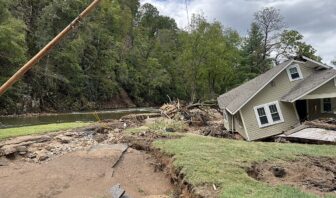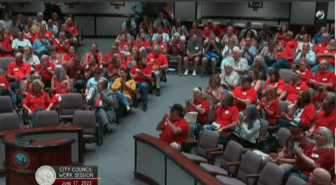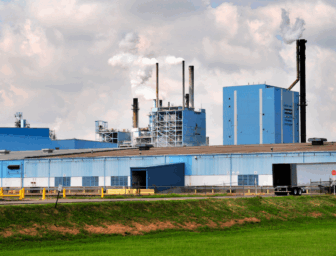Chesapeake Climate Action Network
FOR IMMEDIATE RELEASE
May 5, 2012
CONTACT:
Mike Tidwell, mtidwell@chesapeakeclimate.org, 240-460-5838
Jamie Nolan, jamie@chesapeakeclimate.org, 240-396-2022
Marylanders “Connect the Dots” Between Climate Change & Extreme Weather
Students stage “drown in” over sea-level rise and farmers highlight weather impacts on crops as part of a dozen events across Maryland illustrating the rising impacts of climate change
TAKOMA PARK – Marylanders at 12 sites across the state today highlighted the impacts of extreme weather and sea-level rise as part of the first international Climate Impacts Day to draw attention to how climate change is already affecting life throughout Maryland.
Students from St. Mary’s College floated face down in the St. Mary’s River to illustrate the deadly threat of sea-level rise to their future. A wine grower in Garrett County gave tours of his vineyard already highly threatened by the unusually warm weather in recent years. Kayakers on the Eastern Shore demonstrated how sea-level rise is erasing an acre of marsh every day in Dorchester County. And citizens in Montgomery County gathered outside a coal-fired power plant to illustrate how American reliance on dirty fossil fuels is the main source of accelerating climate change in our nation.
These events are part of the first-ever Climate Impacts Day, a global event sponsored by the group 350.org and its allies that is designed to “connect the dots” between climate impacts, such as extreme weather events, and the broader climate change crisis. At nearly 1,000 events in more than 100 countries, people highlighted how climate change is affecting their lives here and now.
Paul Roberts, winemaker with Deep Creek Cellars in Friendsville, has experienced the effects of extreme weather on his family’s business. “Extreme weather events have devastating impacts on our grapes and to the crop of all of the state’s vineyards,” he explained. “Climate variations – even small ones – have major impacts on grape and wine quality.”
Said Mike Tidwell, director of the Chesapeake Climate Action Network: “Our growing use of extreme energy – deep-sea drilling for oil, fracking for natural gas, tar sands for oil in Canada, and coal extracted from mountain top removal – is driving more and more extreme weather. It’s time to connect the dots and make the switch to clean energy like offshore wind power in Maryland.”
A recent poll by George Mason University and Yale University found that Americans’ concern about climate change was increasing with more extreme weather and warmer temperatures. According to the research, 82 percent of Americans report that they personally experienced one or more types of extreme weather or a natural disaster in the past year.
350.org was the primary organizer of Climate Impacts Day events across the globe. May Boeve, executive director of 350.org, said: “Because the globe is a big place, sometimes it’s hard for people to see how the drought affecting their city is driven by the same force as the flooding somewhere else. That’s why we need to connect the dots between climate change and extreme weather.”
In 2011, the United States saw 14 weather disasters that each caused one billion dollars or more in damage. Around the world, extreme flooding submerged nearly all of Bangkok, drought continued to ravage the Horn of Africa, and typhoons and hurricanes hit vulnerable communities in places like the Philippines.
FOR MORE INFORMATION: For more information about Climate Impacts Day events across the globe, visit www.climatedots.org. For more information about Maryland-based events, contact Keith Harrington at keith@chesapeakeclimate.org“>keith@chesapeakeclimate.org or 240-396-1985.
###




